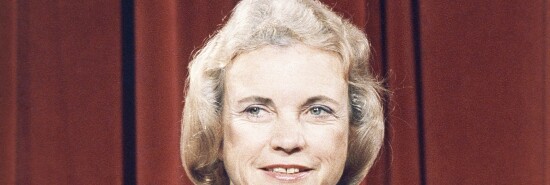
O’Connor should be every bit the cultural icon as RBG
Quin Hillyer
Video Embed
As dignitaries marked the funeral of former Supreme Court Justice Sandra Day O’Connor on Tuesday, one hopes she can finally get her due as the trailblazer she was. As is usual for Republicans or those deemed right of center, the media have shortchanged her.
O’Connor was the first woman to serve on the nation’s highest tribunal. Yet, it was liberal icon Ruth Bader Ginsburg, not O’Connor, who was chosen to grace a postage stamp, even though the latter preceded the former on the court by 12 years. O’Connor doesn’t have a rap-music-inspired nickname. Her face isn’t on T-shirts. There are no major museum displays or “artisanal hagiographies” dedicated to her, much less any biographical picture books. Hollywood hasn’t made her a heroine. The initials “RBG” are familiar, but have you ever heard pop-culture references to “SDO”?
SANDERS MINIMUM WAGE BILL WOULD REDUCE POVERTY BY 400,000 BUT ALSO KILL 700,000 JOBS: CBO
The lack of lionization for O’Connor comes even though on some matters central to the leftist zeitgeist, especially the Left’s uber-obsession with keeping abortion legal, O’Connor saved the Left’s bacon even before RBG joined the high court. And O’Connor drove to distraction all those conservatives convinced that the Constitution’s meaning cannot change without an amendment, as when she pleased the Left by ruling that race-based college admissions were constitutional in 2003, even though “25 years from now, the use of racial preferences will no longer be necessary.”
Still, she was appointed by conservative icon President Ronald Reagan, she ruled that Democrat Al Gore couldn’t invent new ways to count ballots to defeat Republican George W. Bush, and she ruled that the use of school vouchers at religious schools and the portrayal of a nativity scene in a public display were not unconstitutional “establishments” of religion. For refusing to toe the liberal line, O’Connor was relegated almost to afterthought status, so that more people falsely identified Ginsburg as the first female justice than correctly identified O’Connor.
CLICK HERE TO READ MORE FROM THE WASHINGTON EXAMINER
Yet, by all reasonable feminist standards, O’Connor should have been the ultimate heroine. She finished in the top three in her class at Stanford Law School back when few women had legal careers. She was the first woman to serve as majority leader in any state legislature in the country. As the child of a ranching family, she showed women could be every bit as self-reliant on the western range and in fly-fishing streams as men could. Nor did she hesitate to support or speak up for women specifically as women, as a distinct public cause.
On multiple levels, O’Connor was a remarkable lady and a great American. If the liberal media and their cultural allies did not practice such extreme double standards, she would be considered a woman for all seasons.
